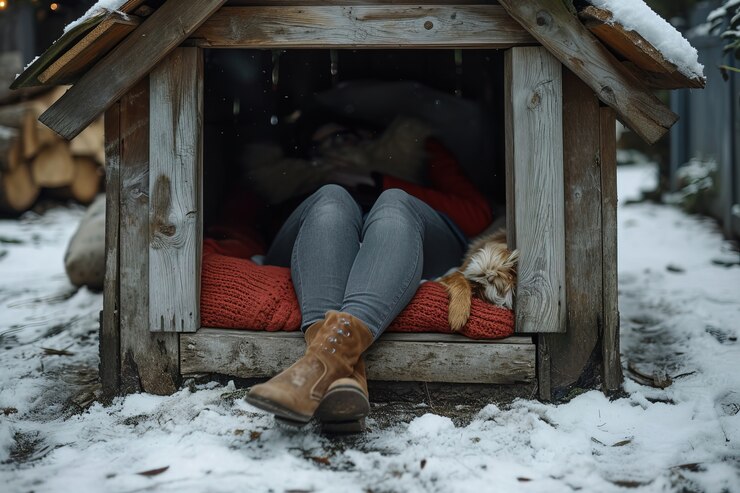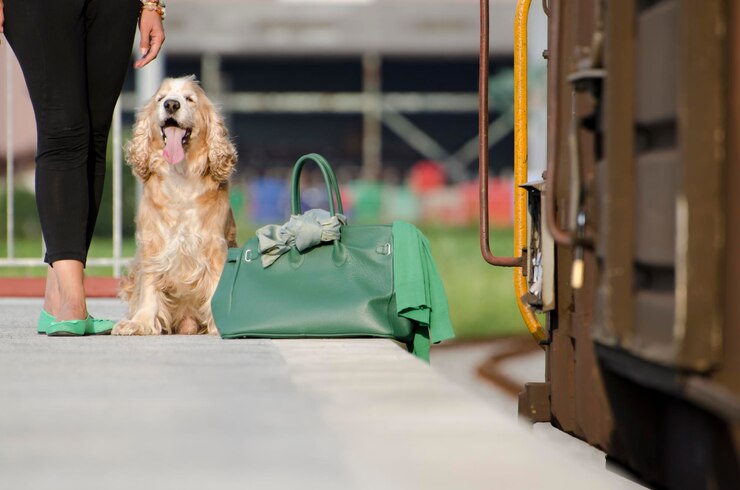Warm Shelter: Small Dog House for Cold Weather

Strong 8k brings an ultra-HD IPTV experience to your living room and your pocket.
A well-insulated small dog house can make all the difference in keeping your furry friend warm, comfortable, and safe during cold weather. Selecting the right dog house for winter conditions involves focusing on insulation, durability, and materials designed to withstand harsh climates.
Dogs, especially small breeds, can be vulnerable to cold temperatures, making a specially designed shelter a necessity. A well-chosen small dog house for cold weather not only provides a cozy retreat but also protects against wind, rain, and snow. By choosing a dog house tailored for winter, you ensure your pet's comfort while maintaining their health during chilly months.
Why Choose a Cold-Weather Dog House?
Small dog breeds often have less body mass and shorter coats, making them more susceptible to cold. Cold-weather dog houses are crafted to combat harsh winter conditions, ensuring your pet stays warm. These houses usually include features like raised floors, insulating materials, and door flaps to trap heat and block drafts. Understanding why your dog needs a winter-specific shelter helps in selecting the best fit for your furry friend.
What to Look for in a Small Dog House for Cold Weather
To choose the right small dog house for cold weather, prioritize a few critical factors that contribute to a warm and protective environment:
1. Insulation Quality
One of the primary elements to consider is insulation. Dog houses made for cold weather often include insulated walls, floors, and ceilings to retain body heat. Materials like foam insulation, thermal panels, or double-walled plastic are excellent choices. The goal is to minimize heat loss while ensuring your dog stays dry and cozy.
2. Durable Materials
Harsh winter conditions demand sturdy construction. Look for dog houses built from weather-resistant materials like heavy-duty plastic, wood treated to resist rot, or composite plastics. These materials offer durability, reduce the risk of warping, and resist moisture, which can be a problem in snowy or rainy climates.
3. Elevated Floors and Ventilation
Elevation helps prevent water from seeping in, keeping the interior dry. A raised floor also helps with insulation by avoiding direct contact with cold ground. Look for houses that include built-in floor insulation or allow you to add your own. Adequate ventilation is another crucial factor—while the house should be warm, it still needs proper airflow to prevent condensation buildup, which can lead to dampness and mold.
Effective Tips for Keeping Your Dog Warm in Winter
Beyond choosing a winter-proof dog house, there are practical steps you can take to keep your dog comfortable during the colder months:
1. Use Bedding Designed for Cold Weather
Lining the dog house with weather-appropriate bedding is a quick and effective way to keep the warmth inside. Choose insulated bedding options like thermal blankets or heating pads specifically designed for pets. Avoid blankets that can retain moisture, as they can turn cold and lead to discomfort. Bedding should be easy to clean and resistant to dampness for maximum comfort.
2. Consider Heating Options
There are several safe heating options to enhance the warmth of a dog house. Pet-safe heating pads, self-warming pet beds, and insulated pads can add extra comfort. If you live in a particularly frigid climate, an electric heater or heat lamp with safety features can be a beneficial addition. Ensure any heating equipment used is weather-resistant and designed for outdoor use.
3. Keep the Dog House Well-Protected
The dog house should be strategically placed to protect it from harsh winds and direct snow. Position it facing away from prevailing winds or near a wall for added shielding. An additional roof overhang or awning can help keep the entry dry and minimize cold drafts. Placing the dog house in a sheltered area, such as under a porch or lean-to, can also provide extra protection.
Best Materials for Winter-Proof Small Dog Houses
Selecting the right materials plays a significant role in how effective a dog house will be in winter. Here's a breakdown of commonly used materials and their benefits:
1. Wood
Wood is a classic choice for dog houses due to its durability and natural insulating properties. Cedar and fir are particularly good options as they resist rot and insects. A well-constructed wooden dog house with thick walls can be quite effective in cold weather, especially when combined with additional insulation layers.
2. Heavy-Duty Plastic
Plastic dog houses are often favored for their lightweight nature and water-resistant properties. High-quality plastic can handle cold temperatures without cracking and usually features double walls for better insulation. Additionally, plastic is easy to clean and less likely to absorb odors.
3. Composite Materials
Composite materials blend the benefits of wood and plastic, offering durability, moisture resistance, and added insulation. These dog houses tend to be heavier but provide excellent longevity and protection from the elements.
Proper Maintenance of a Cold-Weather Dog House
Maintaining a cold-weather dog house involves regular checks to ensure it remains in peak condition, especially during winter months:
1. Seasonal Inspections
Before the winter season begins, inspect the dog house for any damage, cracks, or weak spots that could let in cold air or moisture. Repair any issues promptly to maintain the house’s effectiveness. Check seals and seams for gaps that might compromise insulation.
2. Cleaning Tips
Regular cleaning is essential for a healthy environment. Use pet-safe cleaners to remove dirt, debris, and any moisture buildup. Washing and replacing bedding often will also help reduce odors and prevent mold growth. Keep the interior dry by wiping down any moisture after rainy or snowy days.
3. Storage During Warmer Months
To prolong the life of a winter-specific dog house, consider storing it during warmer months when it’s not in use. Store in a dry location to prevent unnecessary wear. If storage isn’t an option, a protective cover can shield the dog house from sun and rain damage.
Common Mistakes to Avoid When Choosing a Dog House for Cold Weather
While finding the perfect dog house may seem straightforward, it's easy to make mistakes that can reduce its effectiveness:
1. Choosing the Wrong Size
A common error is selecting a dog house that is too large. In winter, a smaller space is better as it retains body heat more efficiently. Choose a size that allows your dog to stand up, turn around, and lie down comfortably without too much extra space.
2. Neglecting Insulation
Many pet owners assume that any dog house is suitable for winter, but not all are built to handle cold conditions. Ensure the house you choose has specific winter features, like insulated walls and a door flap, to protect against drafts.
3. Ignoring Weather-Proofing Features
It’s crucial to select a dog house with adequate weather-proofing. This includes sturdy construction, sealed seams, waterproof roofing, and raised flooring. A poorly weather-proofed house can expose your dog to rain and wind, negating the benefits of insulation.
Conclusion
Investing in a high-quality, winter-proof small dog house can make a significant difference in your dog's comfort and health during cold weather. By prioritizing insulation, durable materials, and proper sizing, you ensure your pet's well-being throughout the winter season. Remember to regularly maintain the dog house to keep it in optimal condition, and your furry friend will thank you with warmth and happiness.
Note: IndiBlogHub features both user-submitted and editorial content. We do not verify third-party contributions. Read our Disclaimer and Privacy Policyfor details.







